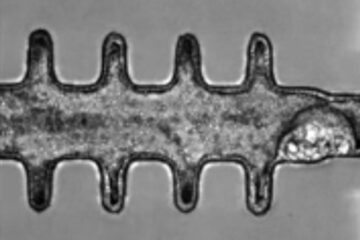New Enzyme Anhydrofructose-Reductase

The invention affects the novel bacterial enzyme 1,5-anhydro-D-fructose-reductase. In a regio- and stereoselective reaction 1,5-anhydro-D-fructose (AF) is quantitatively reduced to 1,5-anhydro-D-mannitol. Generally AF occurs naturally in connection with the enzymatic degradation of storage poly-saccharides like starch or glycogen and the further eucaryotic metabolism results in the sugar polyol 1,5-anhydro-D-glucitol (so-called Third Gly-cogenolytic Pathway). The bacterial, NADPH-dependent enzyme exhibits a limited substrate spectrum and reduces other structure analogous 2-keto-aldoses. Due to the heterologous expression in E. coli the biocatalyst is available in sufficient amounts. The specific analysis of AF and selective synthesis of the manno-configurated reduction products are counted among the most important areas of application of the new AF-reductase.
Further Information: PDF
Universität des Saarlandes Wissens- und Technologietransfer GmbH PatentVerwertungsAgentur der saarländischen Hochschulen
Phone: +49 (0)681/302-6340
Contact
Dip. Chem. Dagmar Vössing, Dipl.-Kfm. Axel Koch MBA, Dipl. Ing. Gerd Schneider
Media Contact
All latest news from the category: Technology Offerings
Newest articles

Solving the riddle of the sphingolipids in coronary artery disease
Weill Cornell Medicine investigators have uncovered a way to unleash in blood vessels the protective effects of a type of fat-related molecule known as a sphingolipid, suggesting a promising new…

Rocks with the oldest evidence yet of Earth’s magnetic field
The 3.7 billion-year-old rocks may extend the magnetic field’s age by 200 million years. Geologists at MIT and Oxford University have uncovered ancient rocks in Greenland that bear the oldest…

Mini-colons revolutionize colorectal cancer research
As our battle against cancer rages on, the quest for more sophisticated and realistic models to study tumor development has never been more critical. Until now, research has relied on…

















